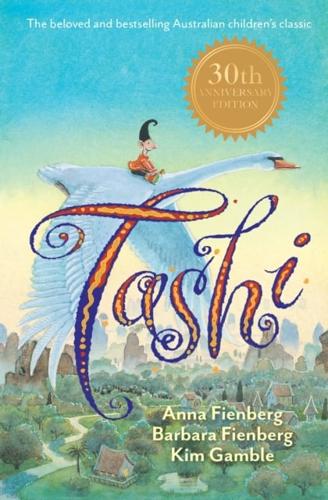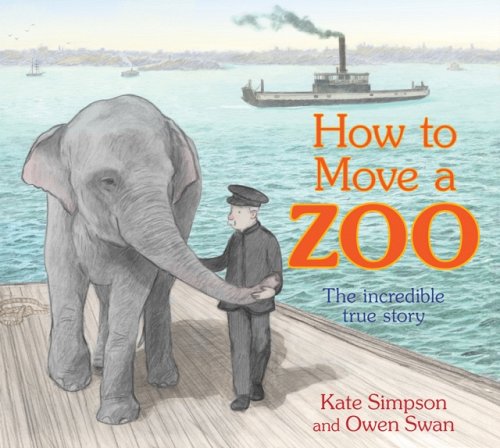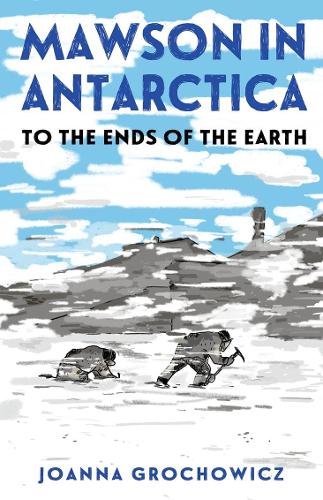When the Ancestry website told me I had distant relatives in Wagga Wagga, I felt compelled to look deeper into migration and the history and culture of Australia. It’s interesting to see that while many UK primary schools touch upon Australia in terms of geography, there are often surprisingly few Australian authors featured in KS1 and KS2 school libraries.
So here’s a list of books with titles for pupils in EYFS, KS1, KS2 and KS3 that explore emigration to Australia from Australian, UK and world perspectives, and – with many thanks to Dr Sandy Nicoll for her invaluable expertise and suggestions – recommended traditional Australian folk tales, books by key Australian children’s authors and illustrators and children’s books that epitomise a diverse range of Australian values. Titles include books by Margaret Wild, Armin Greder, Lian Tanner, Dianne Bates, Aunty Joy Murphy, Kate Grenville and Paul Jennings.
Our recommended Australia topic books for children in EYFS, KS1, KS2 & KS3
Birrarung Wilam: A Story from Aboriginal Australia by Aunty Joy Murphy
A captivating and evocative his story of the Yarra river, told by Aunty Joy Murphy of the Wurundjeri people and illustrated with beautiful paintings by Lisa Kennedy. A wonderful book to inspire poetry and artwork, and also for using as a counterpoint to geography cases studies of Melbourne in KS2 and KS3.
Tashi 30th Anniversary Edition by Anna Fienberg and Barbara Fienberg, illustrated by Kim Gamble
Tashi returns in this special anniversary edition, filled with classic tales and long-lost favourites from the past thirty years. Readers can follow his daring escapes, clever tricks, and fearless adventures as he shares his stories with Jack and his family. Featuring new illustrations by Kim Gamble and the once out-of-print Tashi and the Wicked Magician, this collection dives deeper into Tashi’s world. A joyful celebration of a much-loved character, it’s perfect to read and share with 5+ year olds.
Papunya School Book of Country & History by Papunya School
A truly absorbing picture book that explores the history of the people of the Western Desert, from their perspective, from pre-colonial times to the present day. Created by the teachers and children at Papunya School, this inspiring book is perfect for PSHE activities on the themes of empathy and resolution and KS2 art inspired by indigenous and modern Australian images. An ideal KS2 topic book. There’s a free set of cross-curricular teacher’s notes here.
Walking with the Seasons in Kakadu by Diane Lucas and Ken Searle
A beautifully illustrated portrayal of the six Aboriginal seasons, as seen in Kakadu and shown to the readers in a vivid journey through the bushland. This book is well suited for literacy teaching with years 3&4, and also an interesting counterpoint for EYFS classes looking at the seasons. There’s a downloadable guide for teachers here.
How to Move a Zoo by Kate Simpson
How to Move a Zoo recounts the true story of Jessie the elephant’s 1916 journey from Moore Park Zoo to her new home at Taronga Zoological Park. This narrative non-fiction picture book, with beautifully nostalgic illustrations by Owen Swan, will appeal to 4-8 year olds. Presenting nonfiction history with warmth and feeling, this captivating text is perfect to read and discuss with KS1 classes. Highly recommended.
Waltzing Matilda by Banjo Paterson and Freya Blackwood
This classic and well known Australian song needs no introduction. Presented as an illustrated narrative poem, this is a great text to share and read aloud with KS1 or lower KS2. And, with only three major chords and a G7, this is a song every teacher guitarist or pianist will be able to play with a class.
When I Grow Up by Tim Minchin and Steve Antony
An inspiring picture book that marries the words of Tim Minchin’s Matilda musical to absorbing artwork by Steve Antony. A great book to help children discuss positivity, a growth mindset, and how to improve lives and realise dreams for the future.
There’s a Sea in My Bedroom by Margaret Wild and Jane Tanner
When David hears the sounds of the sea as he holds a conch shell to his ear, a spellbinding fantasy adventure begins in which David has to overcome his fear of water and free the trapped ocean. This highly imaginative story is ideal to use as an impetus for creative writing and classroom art displays.
Diary of a Wombat by Jackie French and Bruce Whately
Wombats are furry and slow-moving Australian marsupials. Told in diary form, a wombat describes his busy week of sleeping, eating and digging holes. He also tries to teach a family of humans to feed him regularly! With brief text and humorous illustrations, this picture book will be a favourite with EYFS children.
Louie and Snippy Save the Sea by Collette Dinnigan and Grant Cowan
This thoughtful and colourful picture book follows Lola and her dog Snippy as they find the once pristine ocean is littered with plastic and harming the environment. A useful book to read and discuss with children in EYFS and KS1.
Young Dark Emu A Truer History by Bruce Pascoe
A compelling and award-winning illustrated nonfiction book that shows Australia as it was before it was colonised by Europeans in 1788. Backed by historical research, this eye-opening account is ideal to show children in years 5-8 a more rounded history and culture of the indigenous Aboriginal Australians. A great book to encourage debate and help children to consider and challenge colonial perspectives. There’s an interview with the author, Bruce Pascoe.
When We Fly by Jess McGeachin
Lucy loves to find out how things work, and how to mend things that are broken. But when she finds a bird with a broken wing, she is faced something she cannot fix. The heartwarming interaction between Lucy and her father, and how they both deal with the situation makes this a touching bedtime story for younger children.
Flight by Nadia Wheatley and Armin Greder
Award-winning Australian children’s author tells a powerful story, using poetic prose, of a family fleeing their home at night and escaping from bombs and tanks. The stark black and white illustrations emphasise the huge challenges and dangers the family will face. But, the sense of hope that they will succeed pervades. A good text for upper KS2 children to discuss in PSHE.
Ella and the Ocean by Lian Tanner and Jonathan Bentley
An evocative and atmospheric story about desperation and drought in the outback – told from the perspective of Ella – a young girl who dreams of living by the ocean. The fantastic colour contrasting artwork is a joy to use as inspiration for creative writing and artwork in KS1.
Aussie Kid Heroes by Dianne Bates
A collection of true stories of heroic deeds by young Australians over the past two hundred years, including athletic, adventurous, and enterprising endeavours. A great book for the primary school library and ideal for children in UKS2.
The Little Wave by Pip Harry
An atmospheric and memorable story told in verse about a group of children who fundraise for a visit to Sydney and the coast. With themes of families, friendships and surfing, this accessible story is ideal for pupils in upper KS2 or lower KS3.
Blueback by Tim Winton
A modern moral tale that examines the way we live and treat the world. This easy to grasp story is deceptively thought-provoking and ideal for book clubs in KS2 to invite discussion about the impact of humans on the natural world. It’s also particularly good for teaching similes and metaphors, and ideal for modelling descriptions.
Mirror by Jeannie Baker
This clever and memorable picture book presents two stories – one to be read forwards from the start, and another to be followed reading backwards from the end. The first story follows a boy living in a Sydney cityscape, and the second story shows the reader the life of a boy living in the desert lands of Morocco. When the Australian family buys a Moroccan rug the stories begin to intertwine.
Blue’s Planet: Australia by Lucy McRobert
Blue faces the harsh realities of climate change during an Australian summer as she explores the world with her environmentalist parents. Lucy McRobert’s chapter book immerses young readers in a thrilling adventure set in the Australian summer, seamlessly weaving educational elements into the storyline. This compelling middle grade adventure will inspire 9-12 year olds readers who care about the planet to take responsibility and be proactive. Part of a series of eco adventure thrillers, it’s ideal for KS2 and LKS3 book club discussions and school libraries.
A Different Boy by Paul Jennings
In part based on the author’s own childhood, ‘A Different Boy’ follows Anton, a ‘ten-pound Pom’ who fled a miserable orphanage for a chance to escape to an idyllic dream of Australia as a stowaway. This atmospheric, emotional and at time heart-rending story, is vividly told by Paul Jennings through his unique perspective as an immigrant in the 1950s and later bestselling Australian children’s writer.
Mawson in Antarctica by Joanna Grochowicz
This detailed and gripping narrative account of Douglas Mawson’s Australasian Antarctic Expedition from 1912-1914 is perfectly pitched to 10-14-year-olds. Drawing from archive diaries and letters, the harsh conditions and challenges faced by Mawson and his team are brought to life. Mawson in Antarctica highlights their scientific achievement, the power of friendship, and their resilience in enduring the severe Antarctic weather. Highly recommended for Y6-Y8. Read our full review.
Stories from the Billabong by James Vance Marshall
An evocative collection of ten aboriginal legends that include the stories of why the Kangaroo has a pouch, what makes the frog croak and how the Great Mother Snake, all set to vibrant Australian artwork.
Tomorrow When the War Began by John Marsden
The first book in a series of seven, aimed at young adults. Ellie and her friends head off on a camping trip in the Australian bush. On their return, all is not well. Their families are missing and the town is deserted. Realising an invasion has taken place, they must decide what to do – run, give up or fight back. A film version was made in 2010.
Australia to Z by Armin Greder
This stark and blunt book looks at Australia – warts and all – from an outsider perspective – to challenge perceptions and provoke a response from the reader. It is particularly useful for debates in KS3 and KS4 PSHE and for secondary aged pupils to compare modern Australia to Brexit era Britain and the Trump-era United States.
Alone on a Wide Sea by Michael Morpurgo
The moving story of Arthur Hobhouse – shipped as a child from England to Australia as an orphan after WW2. Without his home, his sister and the only life he knows, how will he survive? But, in a heart-warming story of achievement over adversity, he forges a new life and his ambition to realise his childhood dreams. An ideal group reader for children in KS2.
Australia by Tania McCartney
This large-format hardback is ideal for a KS2 school or classroom library. Packed with colourful graphics, photography and diagrams, Australia’s history, geography, peoples, landscapes and cultures are explored in amazing detail. A great nonfiction book to captivate children learning about Australia.
Shapes of Australia by Bronwyn Bancroft
Simply presented with a brief description prefacing a traditional Australian pattern or artwork – each one based on an aspect of the natural world. Really useful for exploring line, shape and colour in KS1 and KS1 art and full of ideas to inspire children to think differently about painting the world around them.
The Secret River by Kate Grenville
A Man Booker finalist and winner of the Orange Prize. This is a sweeping novel that exposes the raw and brutal clash of cultures in 19th century Australia. Sentenced to transportation in 1806, William Thornhill and his wife arrive in Australia to find a land far removed from the London slums. Forced to adapt to scratching an existence from a patch of land on the Secret River, they come into contact with indigenous Aborigines who did not recognise the alien concept of land ownership. Horrific events follow, due to a tragic lack of communication and understanding. A must-read novel that will appeal to teenagers in KS4 and KS5.
The 13-Storey Treehouse by Andy Griffiths
Bestselling Australian children’s author Andy Griffiths and illustrator Terry Denton’s modern classic graphic story introduces KS2 aged readers to the mad world of Andy and Terry’s home. Like no other, this treehouse features story after storey (!) of surprises, including sharks, a mermaid, monkeys and a bowling alley.
Australia topic resources and activities
- Suitable for ages 5 to 11, Talia from Northern England and Khynaan from Northern Australia reveal the cultural and geographical differences, and similarities, of living in two distinct places with very different climates in this BBC Teach resource. There’s also a useful set of activities for KS1.
- Looking for pupil pen pals in Australia? Epals offers teachers a safe, moderated and interactive pen pal opportunities.
- The Royal Geographic Society has created a superb set of lessons and downloadable resources for KS1 and KS2 about Australia.
- Northern Ireland Curriculum has detailed classroom topic pack – ‘Australia Here We Come’ – for primary aged pupils with profound and multiple learning difficulties in the classroom
- Tourism Australia has a series of highly engaging multimedia presentations and videos that are ideal for playing on a classroom interactive whiteboard.
- For pupils in KS3 looking at historical reasons for emigration, there’s an interesting series of video clips and resources on BBC Bitesize.
Looking for more children’s book recommendations? Have a look at our genre books , our EYFS & KS1 books, and our KS2 book recommendations.
Please respect copyright and don’t copy or reproduce our Australia topic book reviews. Sharing on social media or linking to our site’s pages is fine. Thanks.





























